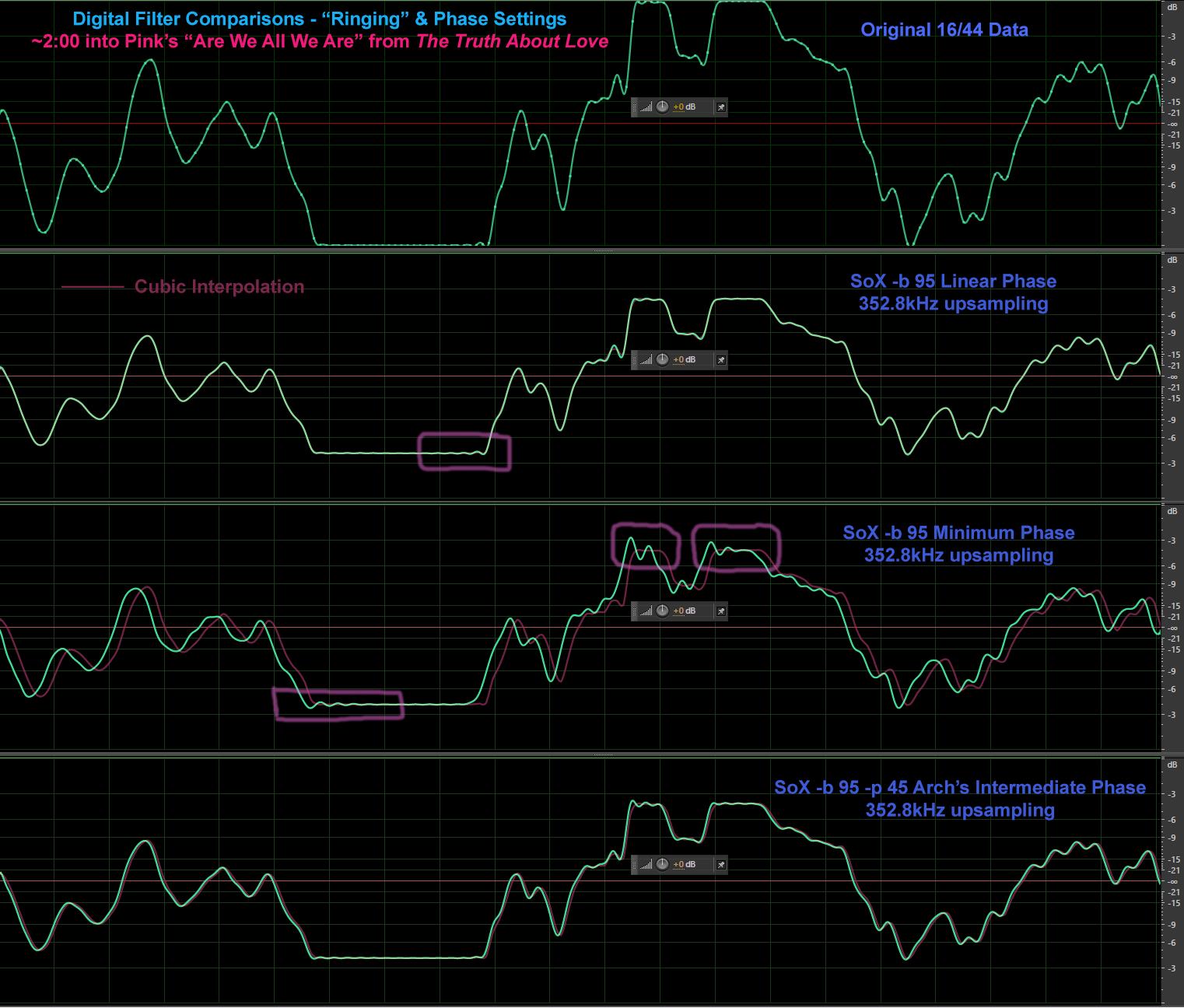I'll answer your questions, hopefully you'll answer mine too.
1) Exactly as described. Here is some actual music and the result using two filters to show how there is a clear difference in ringing between two filters with real music:

Here is some additional work done by Archimago to show both phase shifting and ringing introduced by digital filters:

2) Because there is no phase shift introduced and no pre/post ringing. Whilst also preserving sample values which something like spline or polynomial interpolation (or MQA) would not.
Frequency and time domain behaviour are two completely separate things. Hence why we measure and test them separately. You can't test time domain consistency or jitter from FR either for example.
3) I never said it was, please stop making this assertion. My view is that filters are always a tradeoff and suit different hardware and types of content. Having the flexibility to choose and change is the best solution imo.
4) Stair steps are caused by stuff far outside the audible band (44.1khz). Whereas ringing occurs at the nyquist frequency (22.05khz). Meaning that either neither of these are an issue because they're outside the audible band. Or both are but in different ways (and with NOS arguably being less problematic cause no human can possibly hear 44.1khz whereas they might be able to sliightly hear 22.05khz).
You cannot consider one a problem but not the other. They are both ultrasonic issues.
You can only see these two issues when viewing the analog out recording at a very high sample rate. If you were to record a nos dac sine at 44.1khz you wouldn't see any stair steps at all.
Holo may 44.1khz sample rate 1khz sine:

People (including myself) like HQPlayer because it's about as good as you can get for oversampling. But it's not 'Better' than NOS.
If you ARE going to oversample then using proper noise shapers and going to as high a rate as possible is ideal.
But I switch between NOS and OS because they're simply different. Neither is perfect.
Now, if you wouldn't mind answering my question, that would be appreciated:
Why do you keep jumping in to trash anything when the word 'NOS' is mentioned, and why do you keep asserting that NOS dacs have poor measurements when that isn't the case at all as demonstrated several times?
If you really really like chord dacs or something then that's totally fine. But jumping into threads to stir drama and mock things which you seemingly don't understand is childish and frustrating for all involved.
































